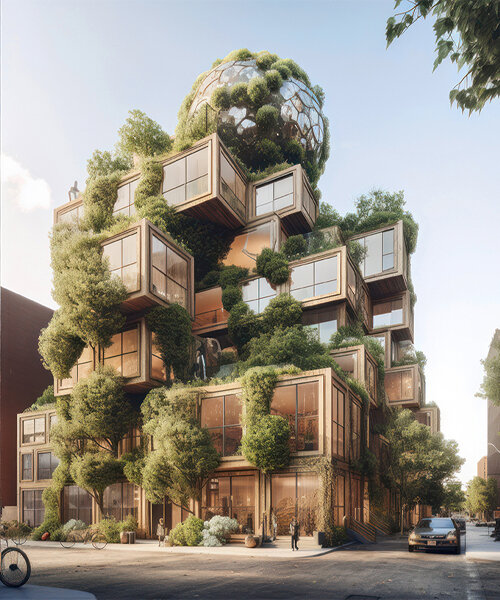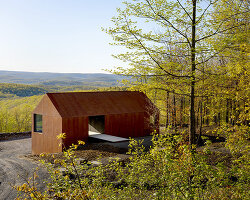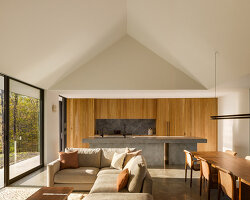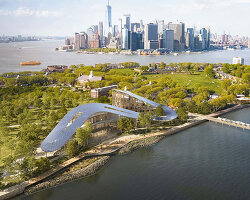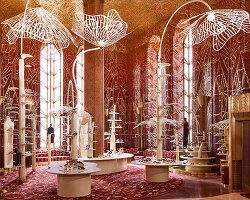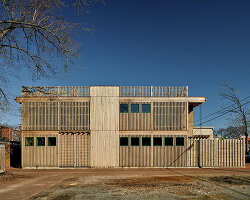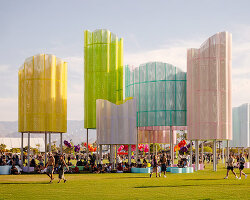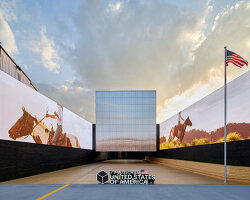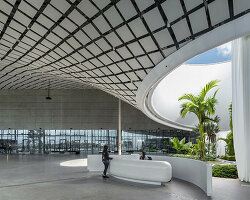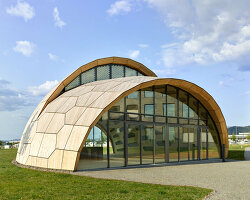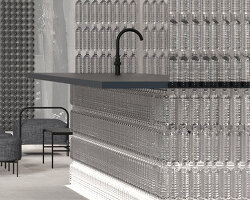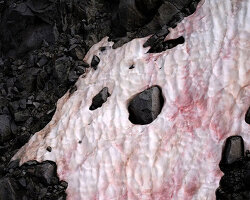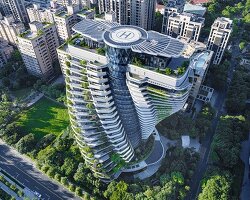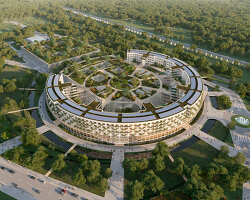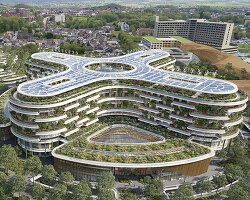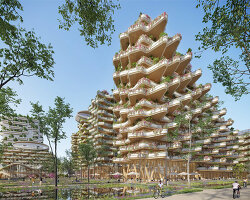envisioning ‘treescrapers’ for net-zero mid-rise living in nyc
Vincent Callebaut Architectures continues exploring new futures with ‘Treescrapers’, a vibrant proposal that transforms New York City into a cluster of climate-responsive, biomimetic, and vertical green villages. Merging Building Information Models (BIM) and AI-generative tools with new parametric climate simulation and construction process optimization software programs, the practice has envisioned this expansive project as part of the net-zero carbon objective of the ‘New York’s Green New Deal’, from the Bronx to Brooklyn via Queens.
‘The ‘New York’s Green New Deal’ provides an 85% reduction in greenhouse gas emissions by 2050 compared to 1990. The remaining 15% could be offset by financing projects deemed beneficial for the climate. This ambitious agreement called the ‘Climate & Communities Protection Act’, provides for 70% renewable energy by 2030 and a total elimination of emissions produced by electricity suppliers by 2040. It aims to promote a socially just transition. Thus, 35% of the State’s energy budget should be directed to low-income and pollution-affected communities,‘ shares Vincent Callebaut.
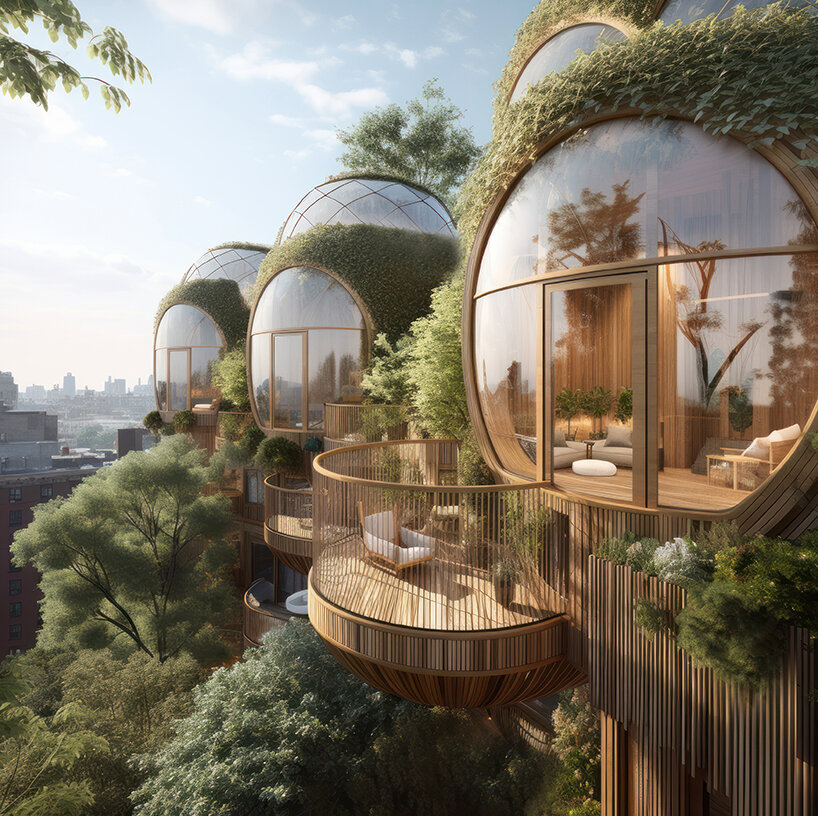
all renders © Vincent Callebaut Architectures
HEALTHIer, CLEANER, and COOLER urban ecosystem
While individual suburban housing ensures space-consuming urban sprawl and Manhattan’s concrete and steel skyscrapers are declared to be energy-intensive, the hybrid concept of the climate-responsive village of medium size, merging low-carbon and bio-sourced materials, integrating the rules of bioclimatic design, renewable energies, biodiversity, and urban agriculture, presents an eco-responsible way of life. According to Callebaut (see more here), this approach saves space and land while encouraging the development of short circuits and soft proximity mobility. In other words, ‘Treescrapers’ offers a people-centric solution whereby eco-friendly buildings increase the sense of community and mutual aid.
‘Our professional commitment is to design increasingly successful sustainable development models in major cities like New York City to ensure the ecological transition of historic neighborhoods while maintaining the intrinsic qualities of the Genius Loci, creating a three-dimensional community based on diversity, flexibility, and solidarity. For a decade, parametric modeling of building data has considerably impacted the art of building ‘better with less’. It enables architects to make more informed decisions by creating more accurate and higher quality digital models throughout the life cycle of buildings, from design to construction, operation, and transformation,’ adds the architect.
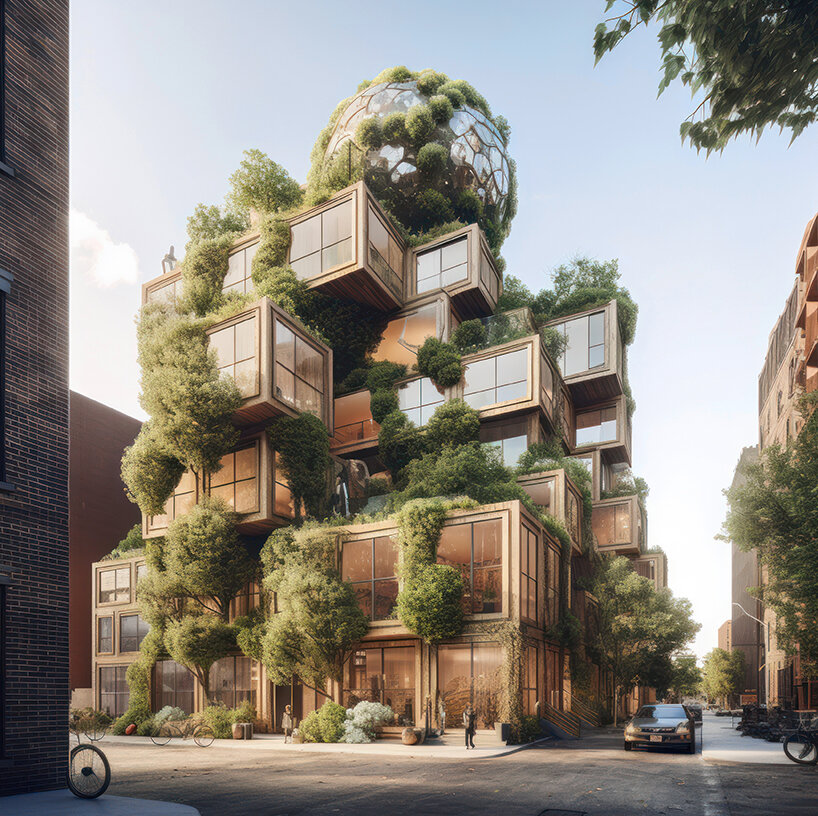
‘Treescrapers’ is a climate-responsive cluster of vertical villages
‘Our goal is to explore construction and planning scenarios, better integrate all design parameters, and analyze the carbon footprint of buildings to improve their manufacturing processes. The digital models thus help us analyze and elaborate on the plurality of data and the best ecosystem options: the technical characteristics of the materials, their carbon footprint, their local availability, their origins, and their recyclability. Finally, climate simulation tools now associated with AI make it possible to optimize climate-responsive design, referring to architecture that integrates the meteorological, biological, and geological conditions specific to the district where it is built.’
‘These new tools synthesize data on all that constitutes the local ecosystem, such as the sun, the wind, the precipitation, the humidity, but also the endemic fauna and flora, and the organic and mineral composition of the soils to imagine the city of New York returning to resilience and symbiosis with nature.’
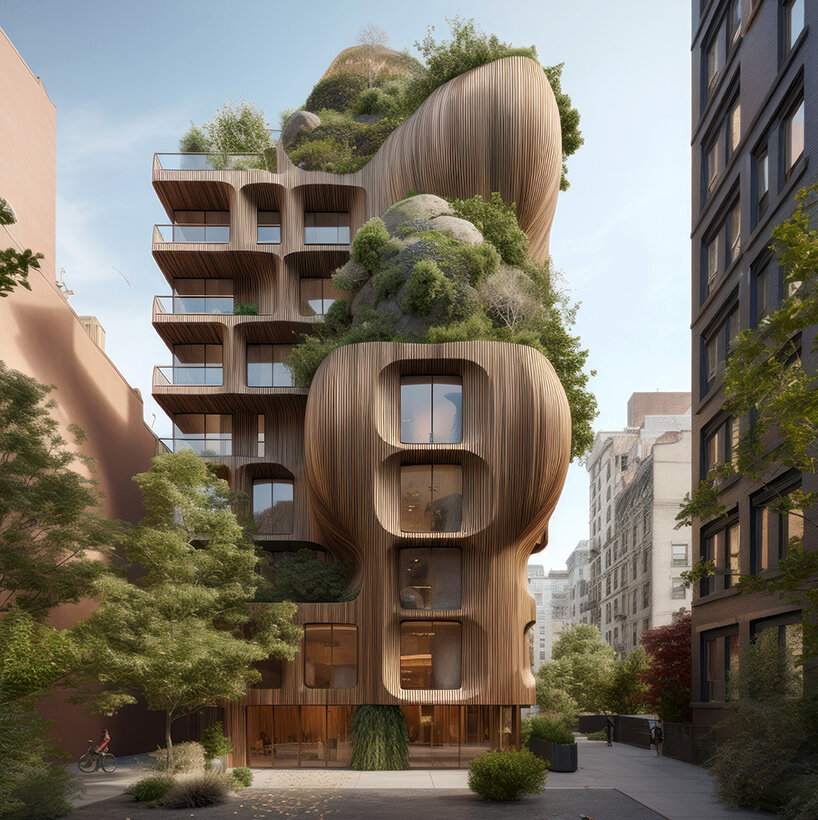
looking to biomimicry to develop the new urban ecosystem of NYC
the four pillars of ‘treescrapers’
In New York, already, urbanization exacerbates the effects of the heat wave on the population, its well-being, and its health with the multiplication of urban heat islands, the increase in water shortages, and air pollution. The same goes for storms and hurricanes, when floods or torrential downpours descend in no time on impermeable soils unable to absorb the rains, causing more and more floods, sometimes destruction. The exponential concentration of individuals in New York City leads urban planners and architects to rethink its infrastructures, its habitats, its mobility, and the management of its waste in the sense of preserving resources and respecting the environment.
With that said, Callebaut’s leitmotif transforms New York City into an ecosystem, its neighborhoods into forests, and its buildings into inhabited trees producing their energy and recycling all their waste into resources. Together, these biomimetic green solutions will help fight against urban heat islands, atmospheric pollution, and soil sealing while promoting rainwater management, recycling of gray water, reinforcing green and blue urban networks, protecting biodiversity, implementing urban well-being, and developing Urban Agriculture. Specifically, Vincent Callebaut Architectures broke down this eco-design strategy behind ‘Treescapers’ into four major pillars.
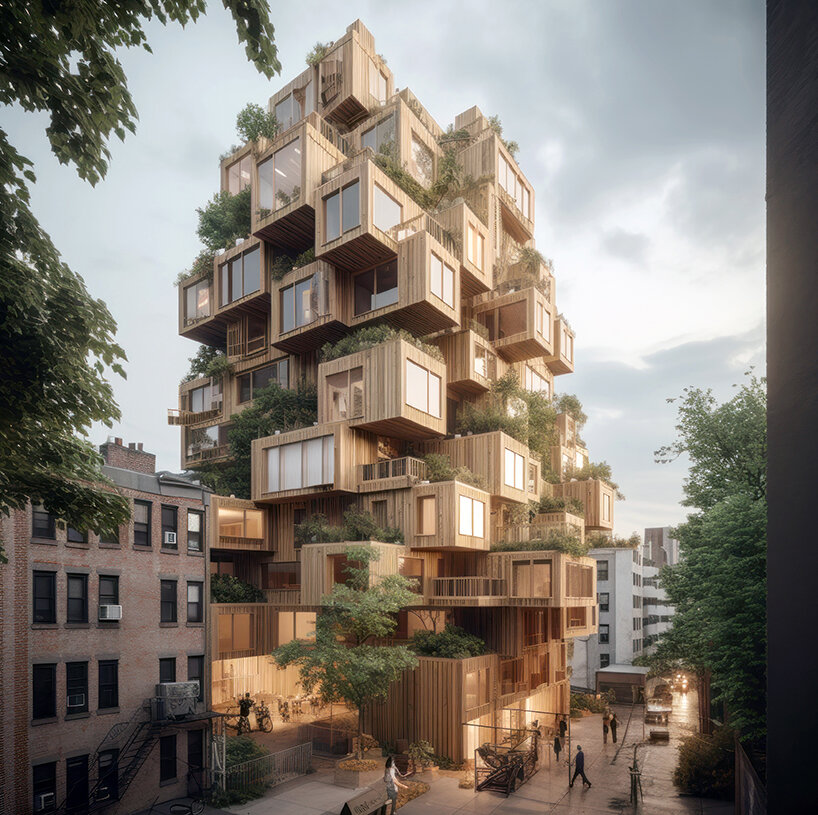
healthier, cleaner, greener, and cooler NYC
The first is compliance with climate-responsive design; this involves sculpting the buildings based on the climatic data of the place, such as the course of the sun from East to West and the direction of the prevailing winds to limit the venturi effects, optimizing natural ventilation, and orient stays as best as possible to benefit from the best solar gain. The design of the façades, terraces, and through apartments is thus thought to be as energy efficient as possible, with minimum mechanical air conditioning to tend towards a passive architecture integrating natural ventilation systems such as wind chimneys.
Next is the integration of renewable energies; to move towards a BEPOS (Positive Energy Building), the integration of renewable energies (axial wind turbines, solar panels, geothermal energy) makes it possible to produce self-consumption of the cooling, heating, and electrical energy whose buildings need to aim for carbon neutrality. The third pillar focuses on spatial agility; the durability and mutability of the habitat lie first and foremost in its ability to adapt to changing uses and ways of living. It is the meaning of history to consider as far as possible from its design the possible future scenarios of the life of the buildings. Habitats that can be transformed at will and are hyper-flexible must be able to marry the constant evolutions of intergenerational family units and the necessary mutability between spaces of private life and professional life.
And lastly, Vincent Callebaut spotlights urban agriculture; on the roofs of buildings and in the heart of the plots, we imagine integrating greenhouses and market gardening orchards cultivated in permaculture and dedicated to urban agriculture to strengthen solidarity and social cohesion at the scale of residents and neighbors.
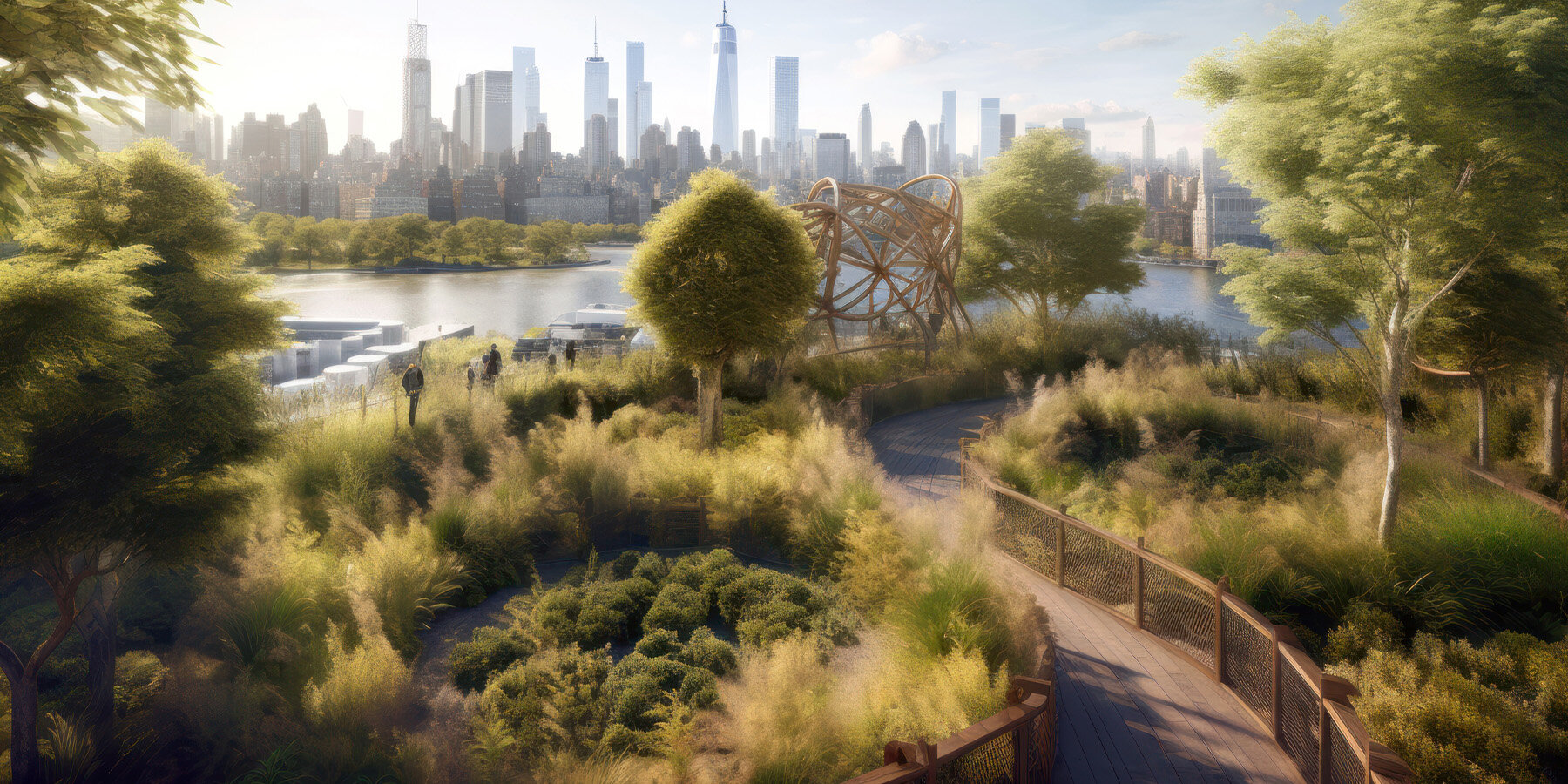
sobering up the metropolis by ‘building better with less’
Ultimately, this ecosystem-based vision would offer a more ‘sober’ metropolis where low-tech and high-tech approaches work together to ‘build better with less’ — and VCA working on three significant targets to sober up New York City. First, energy efficiency: At the scale of the building, we want to build through and/or multi-oriented housing that is healthy and pleasant to live in with a low rate of mechanical ventilation and without air conditioning or heating. Thanks to natural ventilation, passive cooling, recovery of free heat input, and thermal inertia, the climate-responsive design makes it possible to reduce energy consumption to a strict minimum while ensuring increased comfort.
Second, natural materials: Biobased, geo-sourced, or reused materials are favored both for the structure of the building and for its insulation or façade claddings. They are carefully selected to highlight the local ecosystem and short circuits. Cross-laminated wood, engineered wood or bamboo, wood wool, straw, hemp concrete, low-carbon concrete, earth concrete, raw earth, and terracotta, all these natural materials fit into our so-called regenerative circular economy approach, where all waste becomes a resource.
And third, technical sobriety: Sobriety does not mean an absence of technology, but the priority use of relevant, appropriate, non-polluting, or wasteful techniques, such as simple implementations and devices that are easy to repair, recycle, and reuse. Technology is there to implement the building by optimizing, for example, our energy consumption or the intelligent sharing of convivial places.
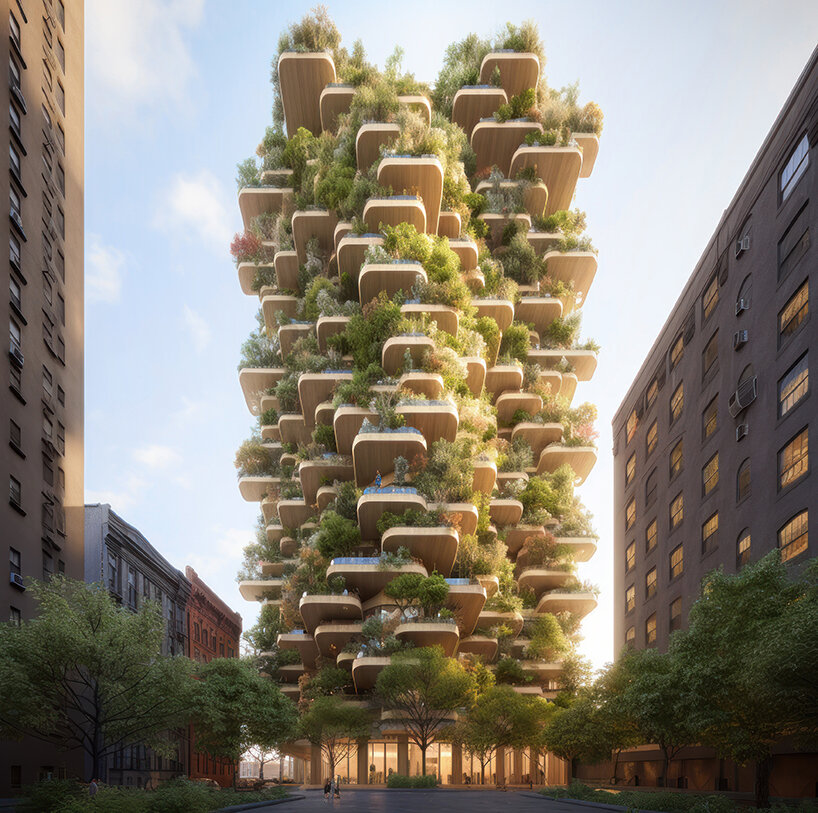
dynamic designs based on AI-generative tools and BIM
In addition to bio-concrete and low-carbon steel development, massive timber is enjoying a spectacular renaissance worldwide as a renewable raw material and the oldest building material in history. Regarding decarbonization, wood construction can play a significant role in CO2 sequestration. ‘But if we want to face our impact on climate change, we need a diversified pool of resources to choose among several low-carbon options and apply them. Thus, bio-sourced materials, with wood in mind, straw, hemp concrete, bamboo, and geo-sourced materials, such as biobased raw earth and dry stone, are gaining visibility in New York City. The low-carbon and bio-based construction industry must prioritize improving understanding of the entire life cycle of materials, from design to dismantling buildings, to encourage their reuse in new configurations, like a giant Meccano,’ elaborates Callebaut.
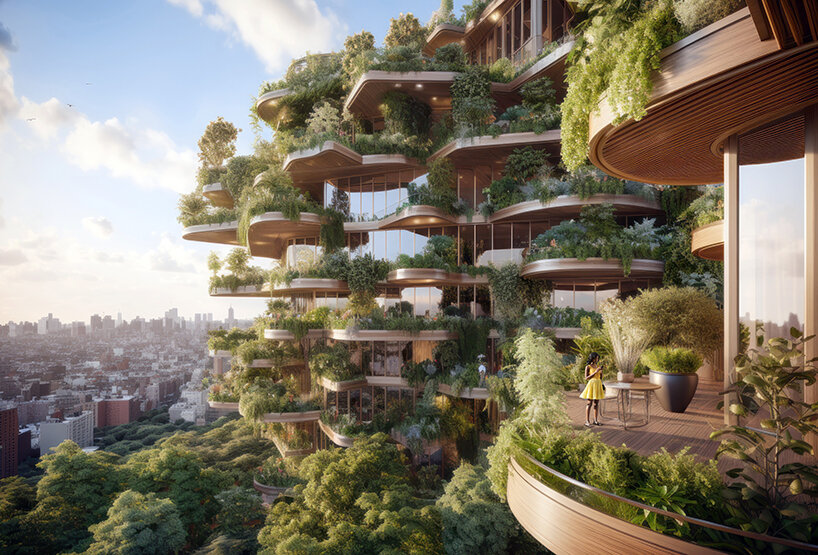
helping combat the urban heat island effect
REGENERATIVE BUILDINGS on THE WAY TO CIRCULARITY
Concluding his vision, Vincent Callebaut reveals that, at the heart of the challenges of the New York City of tomorrow, the problem of resources (which are not unlimited) and that of waste make up the virtuous circle of the circular economy. Known to be regenerative, this economic model aims to move from an all-disposable society to one that recycles everything to avoid waste and depletion of the planet’s resources. In other words, communities must learn to consume with sobriety, improve sustainability, limit waste, and turn it into new resources. Ultimately, regenerative architecture hopes to deploy renewable energies massively and create spaces that meet the primary needs of occupants, easily adaptable while minimizing costs, waste, and environmental impact.
‘To build sustainably and with common sense is to stop destroying and, even, to know how not to build, but to regenerate, metamorphose, reconvert, rehabilitate, renovate, enlarge, and give new life to the ‘already there’. Sober but creative, our biomimetic and regenerative architectures wish to stimulate happiness, and the joy of living among New York residents. They draw their inspiration from the Genius Loci, the culture of its places, its air, its soil, its biodiversity, and the economy of its territory. Their ambition is to become the emblem of the correct symbiosis of the Humanity-Nature couple at the heart of the Big Apple,’ reflects the architect.
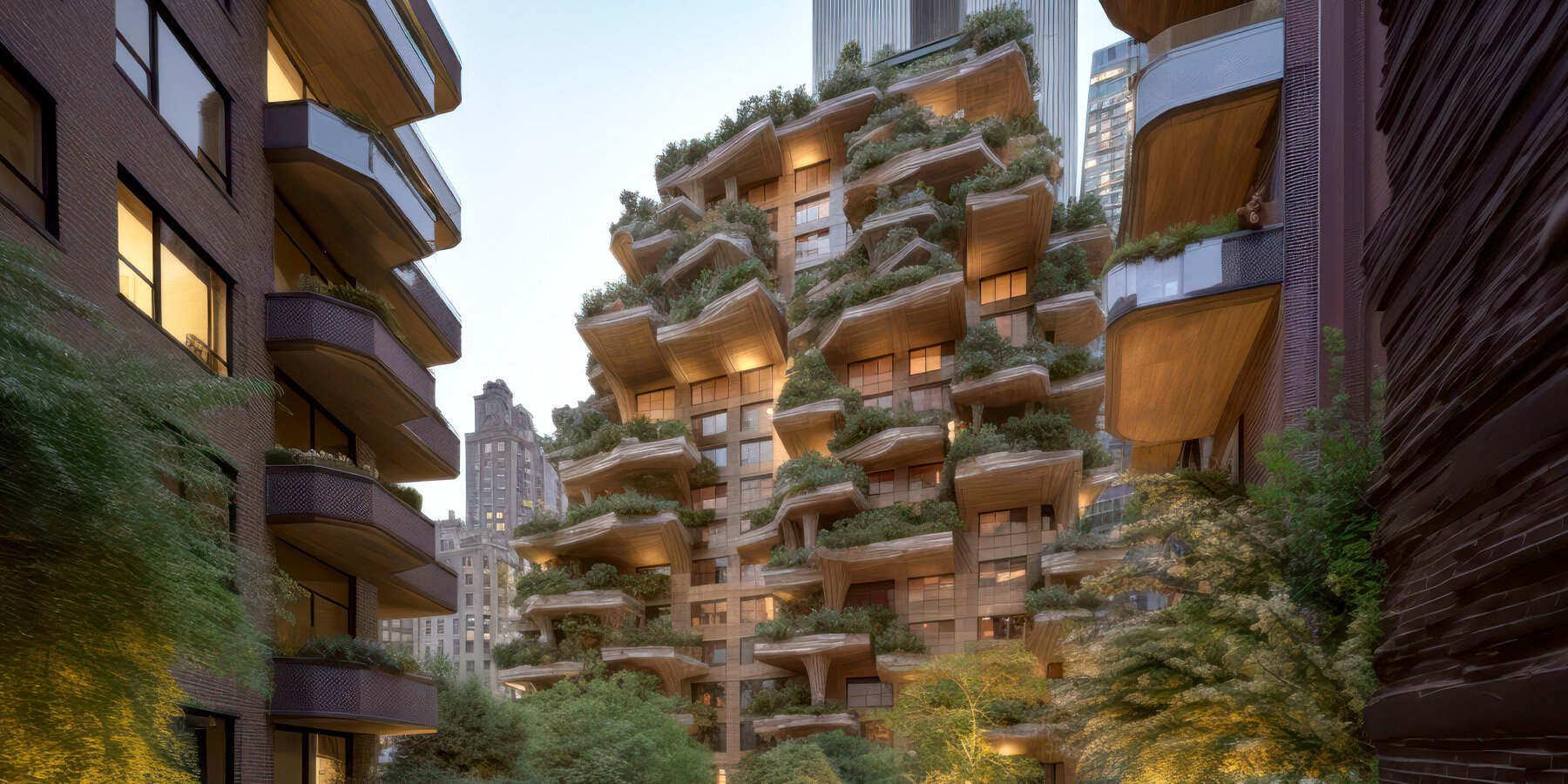
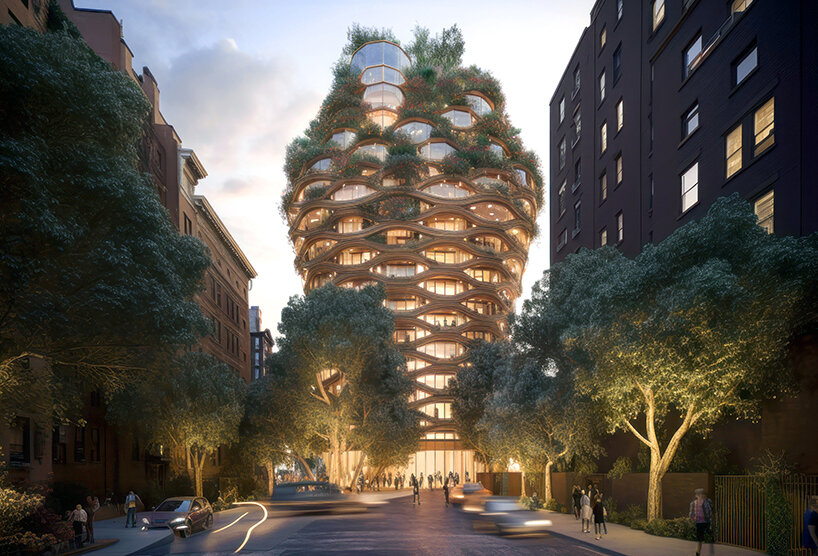
ecological sprouting of mid-rise living
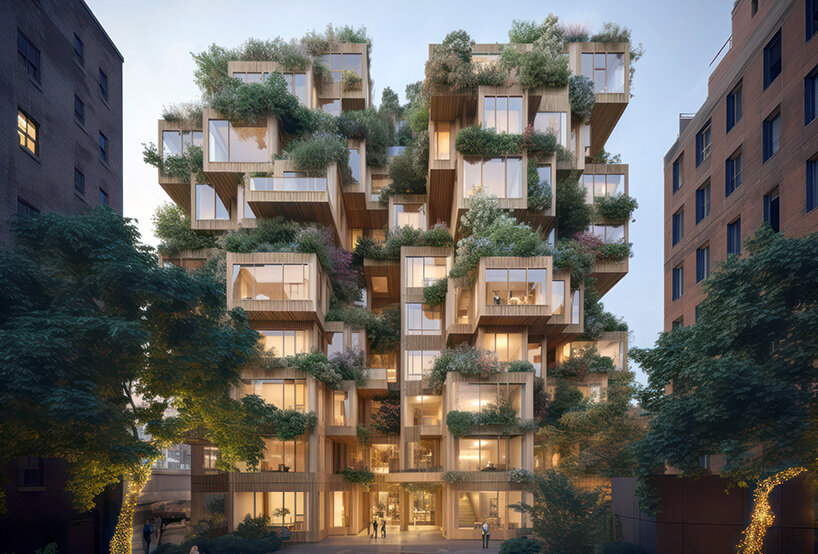
a stacking approach to architecture
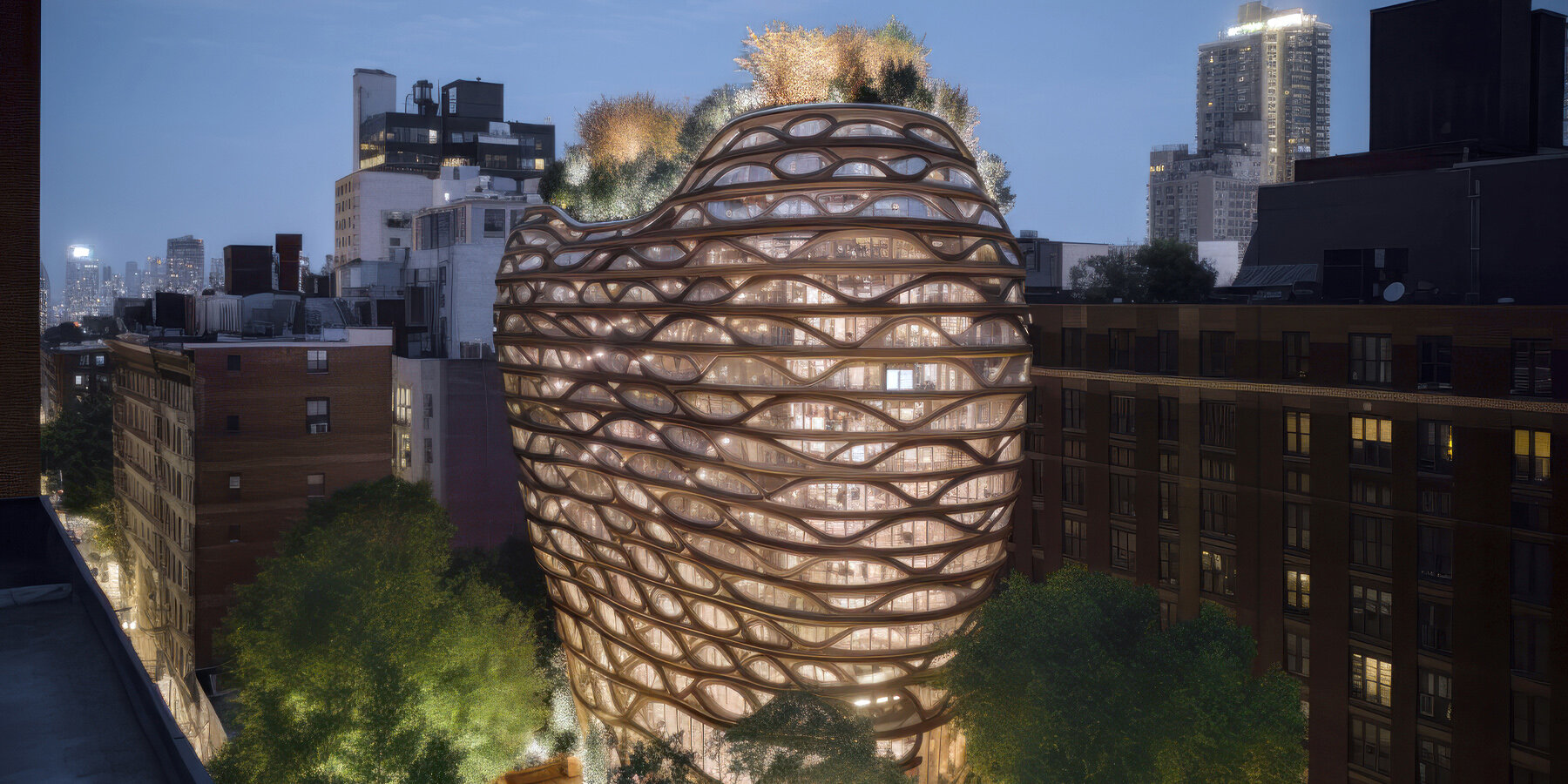
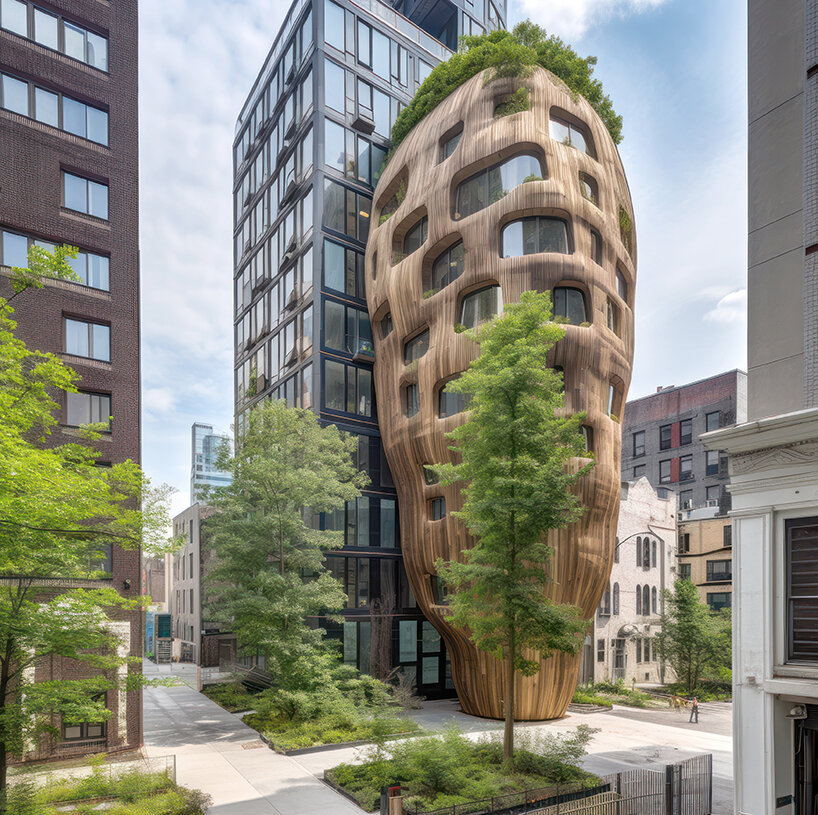
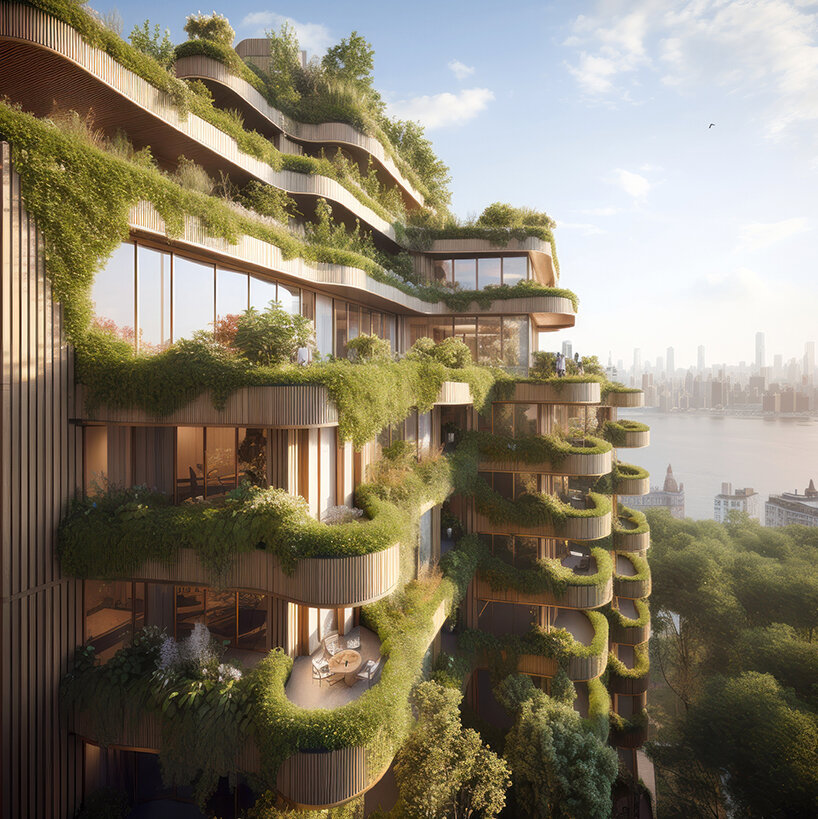
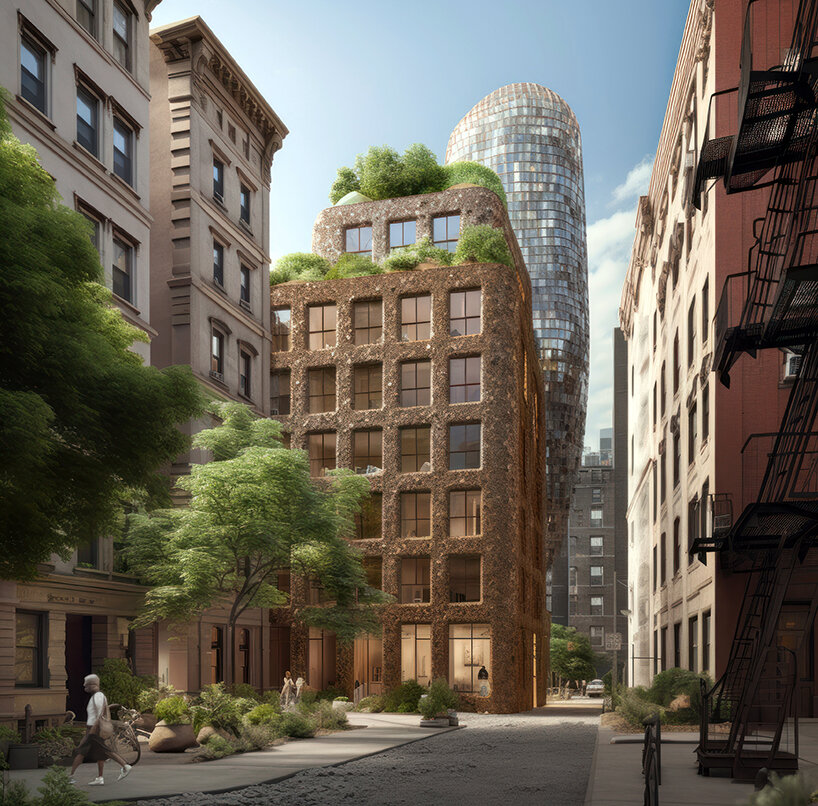
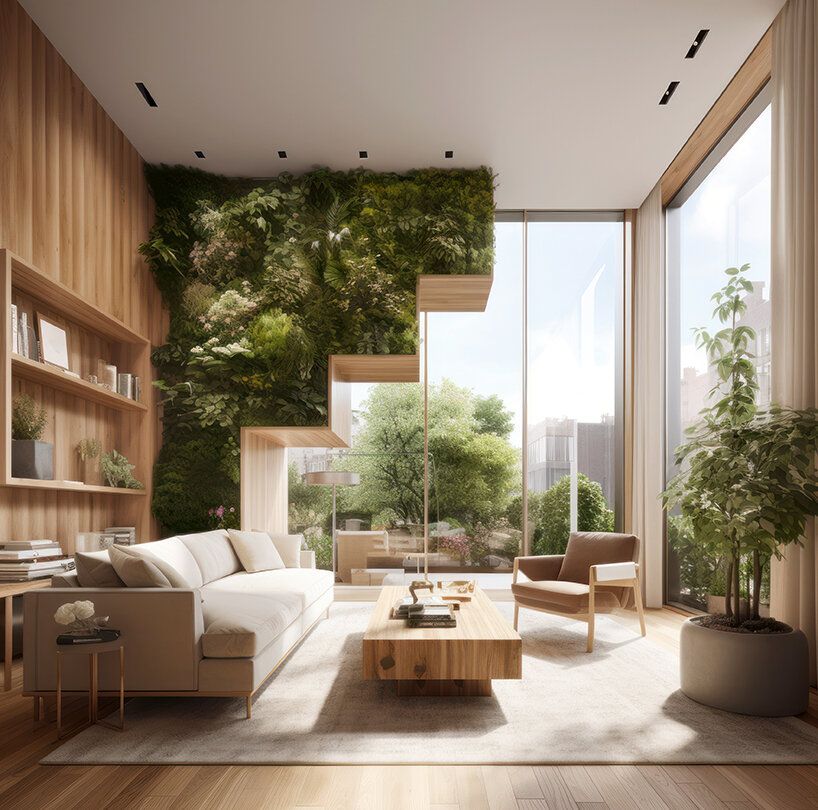
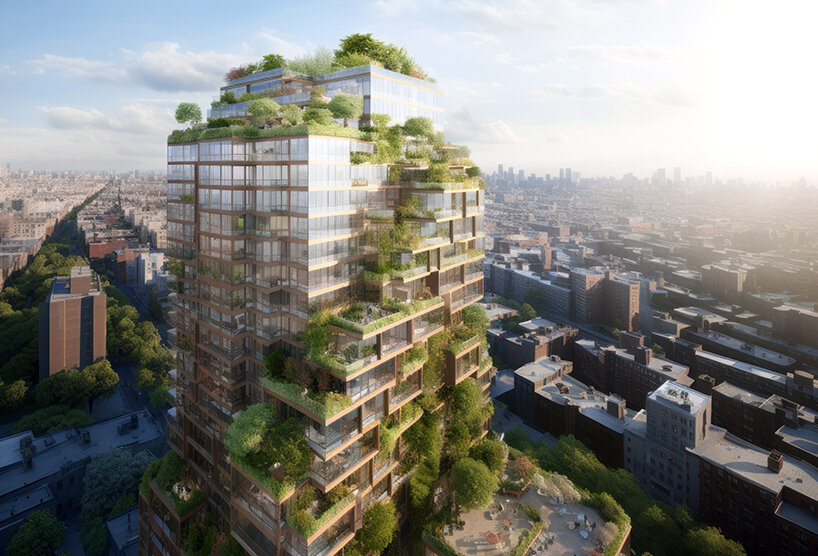
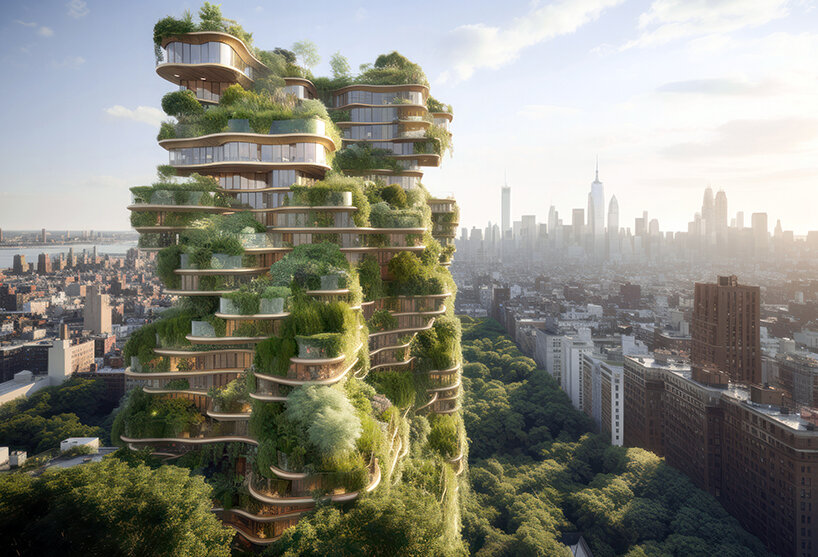
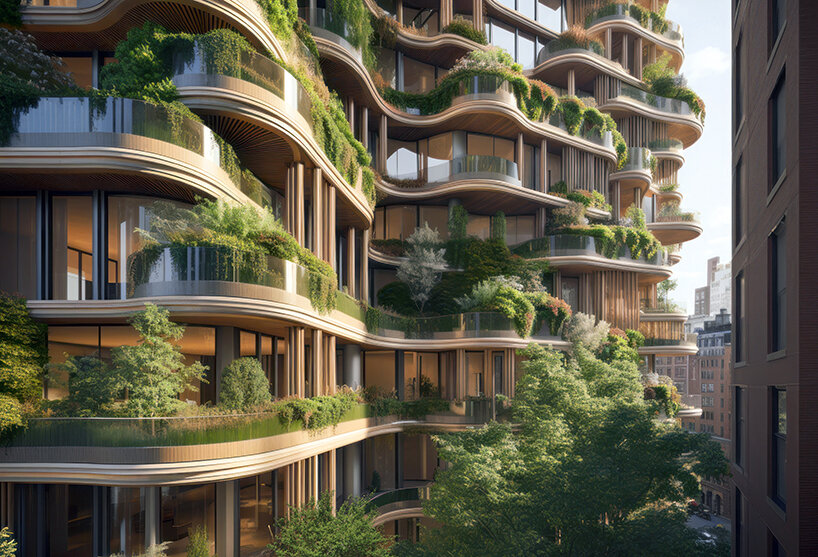
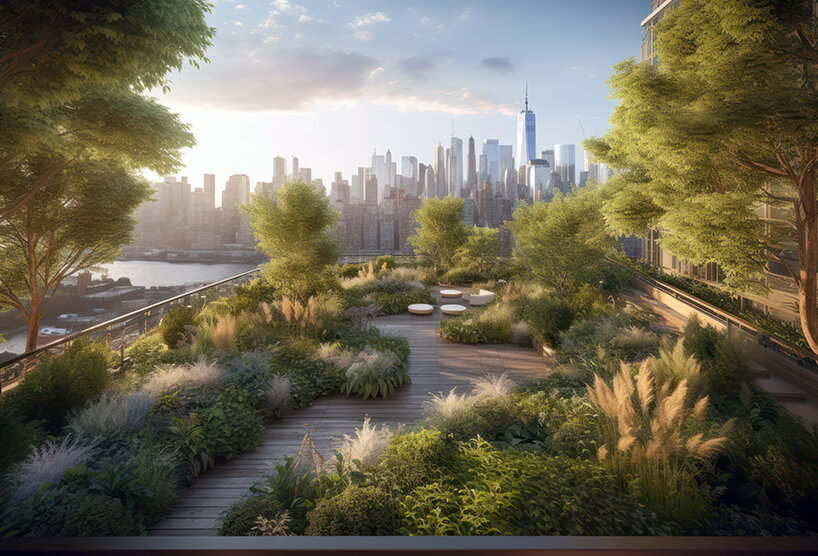
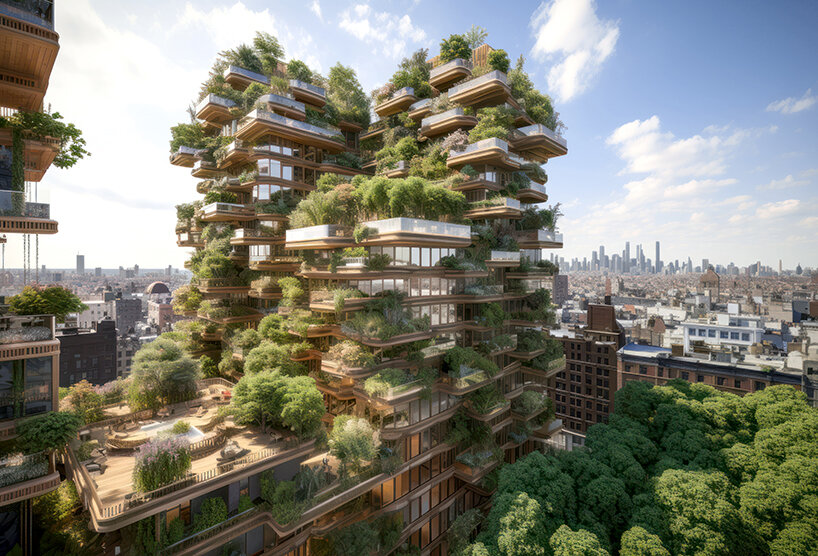
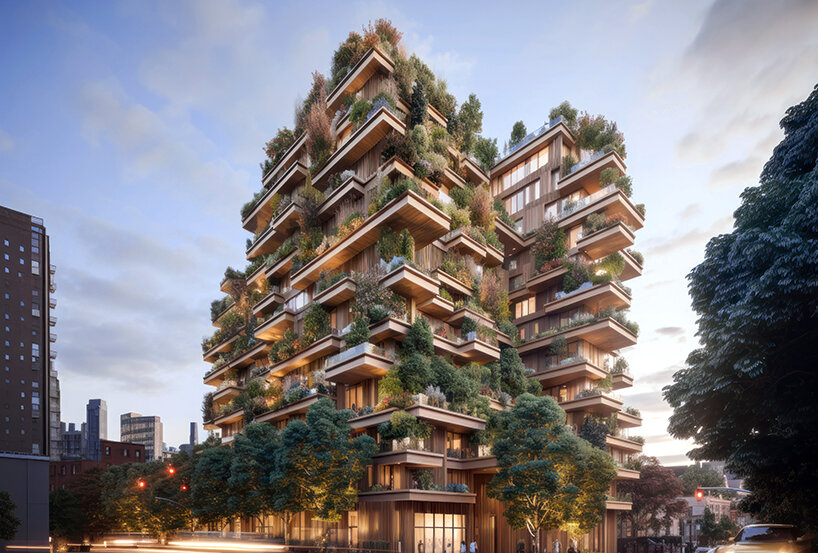
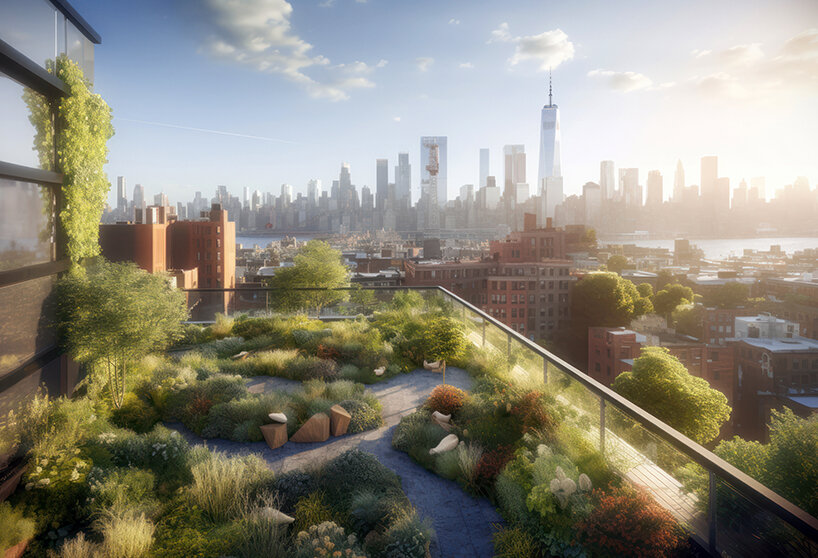
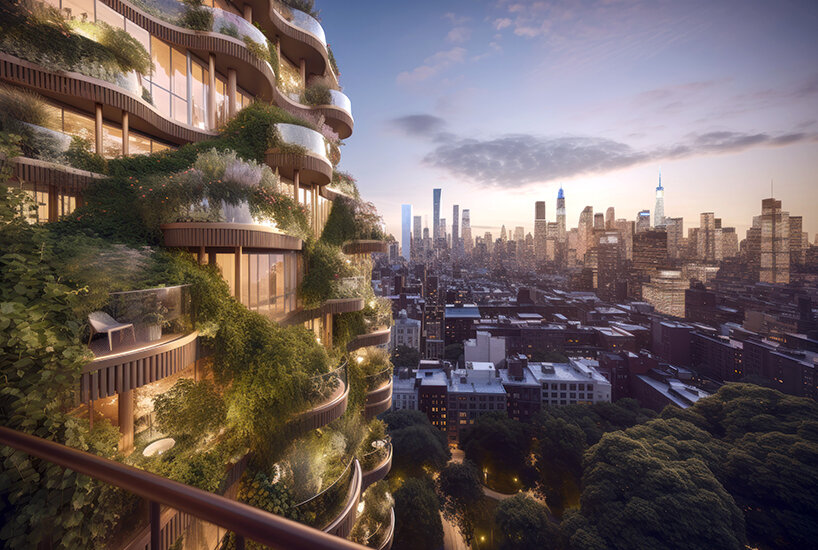
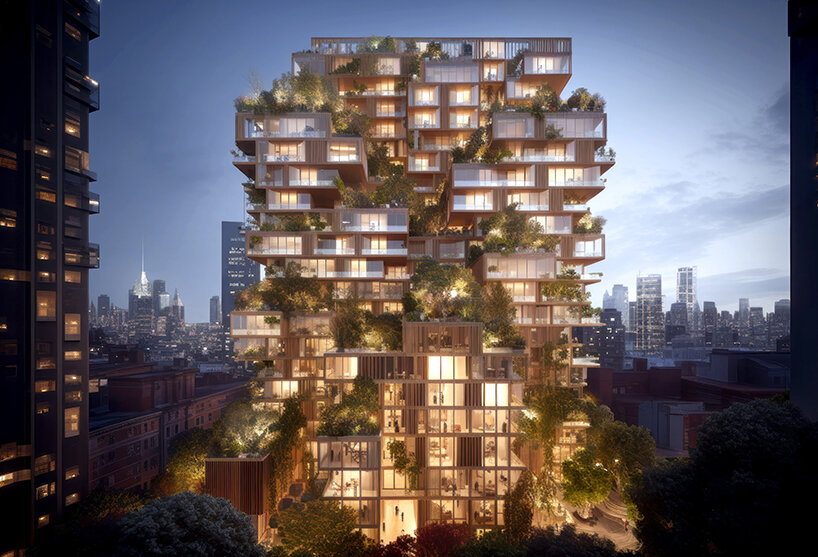
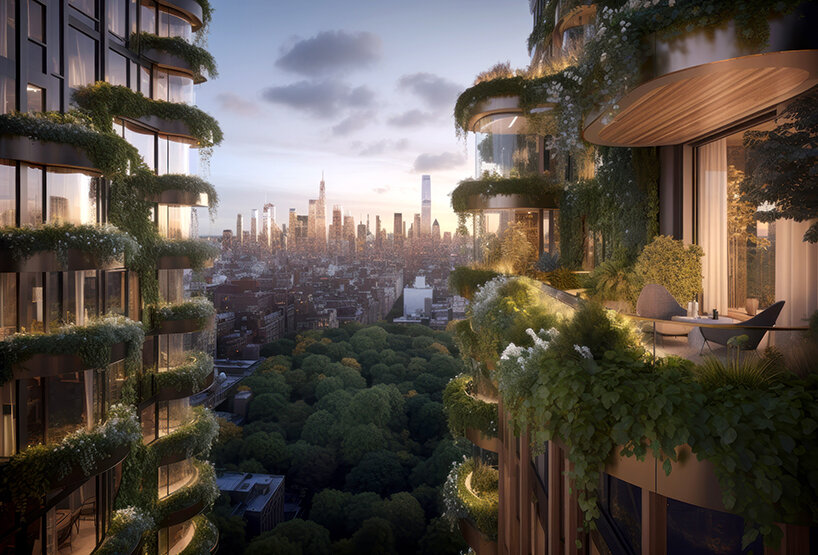
project info:
name: Treescrapers
location: New York City, NY, US
architecture: Vincent Callebaut Architectures | @vincentcallebautarchitectures
